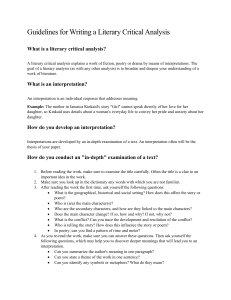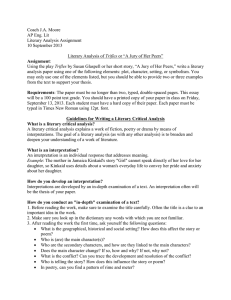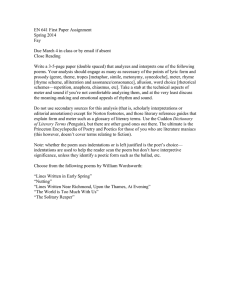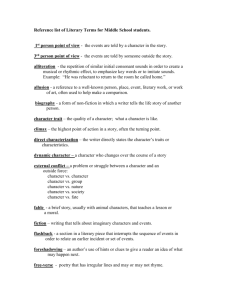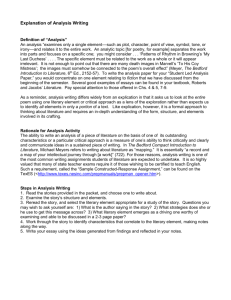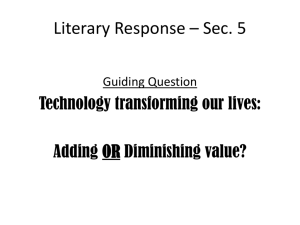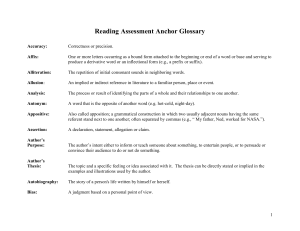Writing a Literary Critical Analysis
advertisement
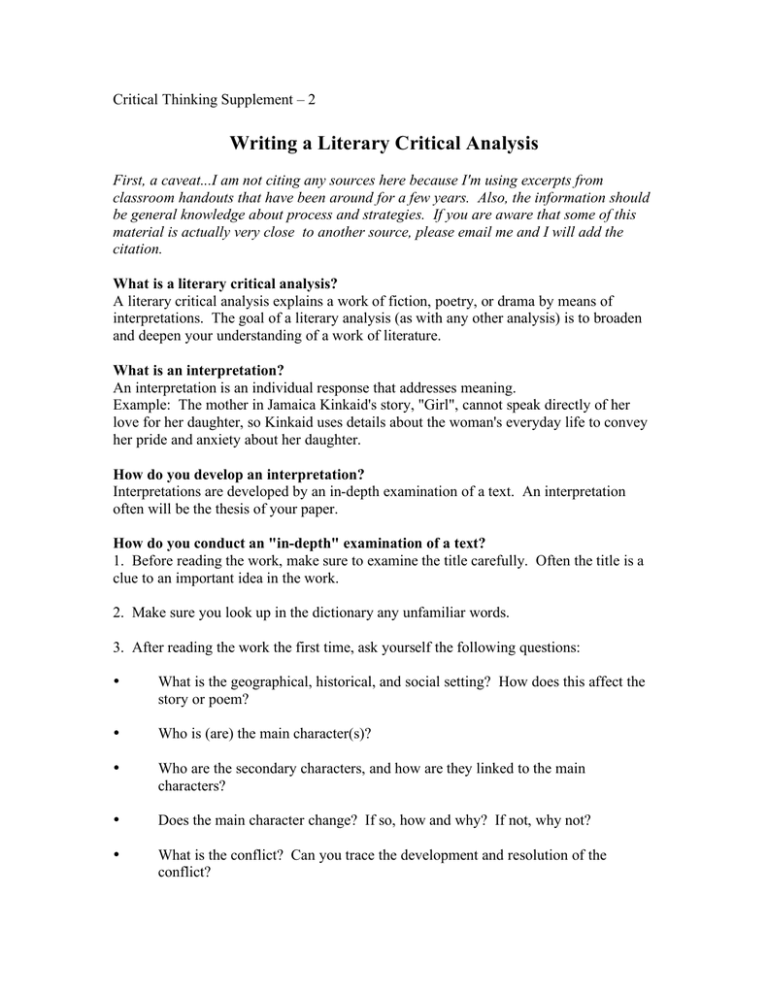
Critical Thinking Supplement – 2 Writing a Literary Critical Analysis First, a caveat...I am not citing any sources here because I'm using excerpts from classroom handouts that have been around for a few years. Also, the information should be general knowledge about process and strategies. If you are aware that some of this material is actually very close to another source, please email me and I will add the citation. What is a literary critical analysis? A literary critical analysis explains a work of fiction, poetry, or drama by means of interpretations. The goal of a literary analysis (as with any other analysis) is to broaden and deepen your understanding of a work of literature. What is an interpretation? An interpretation is an individual response that addresses meaning. Example: The mother in Jamaica Kinkaid's story, "Girl", cannot speak directly of her love for her daughter, so Kinkaid uses details about the woman's everyday life to convey her pride and anxiety about her daughter. How do you develop an interpretation? Interpretations are developed by an in-depth examination of a text. An interpretation often will be the thesis of your paper. How do you conduct an "in-depth" examination of a text? 1. Before reading the work, make sure to examine the title carefully. Often the title is a clue to an important idea in the work. 2. Make sure you look up in the dictionary any unfamiliar words. 3. After reading the work the first time, ask yourself the following questions: • What is the geographical, historical, and social setting? How does this affect the story or poem? • Who is (are) the main character(s)? • Who are the secondary characters, and how are they linked to the main characters? • Does the main character change? If so, how and why? If not, why not? • What is the conflict? Can you trace the development and resolution of the conflict? • Who is telling the story? How does this influence the story or poem? • In poetry, can you find a pattern of rhyme and meter? How does this affect your reading? 4. As you re-read the work, make sure you can answer the above questions. Then ask yourself the following questions, which may help you to discover deeper meanings that will lead you to an interpretation: • Can you summarize the author's meaning in one paragraph? • Can you state a theme of the work in one sentence? • Can you identify any symbols or metaphors? What do they mean? How do you prove your interpretation? You prove your interpretation by finding a pattern of examples in the literature that supports your idea. You find this pattern in the literary elements, such as plot, point of view, character, setting, symbols, tone, and style. Poetic uses of language (rhyme, meter, alliteration, etc.) are also patterns that can support your interpretation. Note that many novelists incorporate poetic elements in their style. If interpretations are an individual response, are all interpretations valid? Because an interpretation must be supported, the strength or weakness of your interpretation rests on the strength or weakness of your argument. In other words, you must organize a discussion that convinces the reader that your point of view is astute. Where do you find evidence to support your interpretation? In a literary analysis, evidence is found mainly in the work you are discussing. Secondary sources, such as published critical analyses, may support your point of view, but they should not be your point of view. How much of the story should you retell in a critical analysis? You do need to lead your reader to the scene or section of the poem or work that you are discussing; therefore, some context is necessary. But re-telling the story or poem is not considered to be an analysis. You can assume that your reader has read the work.
